Abstract
Pigeons were trained on a three-component multiple schedule in which the rates of reinforcement in the various components were systematically varied. Response rates were described by an equation that posits that the response-strengthening effects of reinforcement are inversely related to the context of reinforcement in which it occurs, and that the context is calculated as the weighted average of the various sources of reinforcement in the situation. The quality of fits was comparable to that found with previous quantitative analyses of concurrent schedules, especially for relative response rates, with over 90% of the variance accounted for in every case. As with previous research, reinforcements in the component that was to follow received greater weights in determining the context than did reinforcements in the preceding component.
Full text
PDF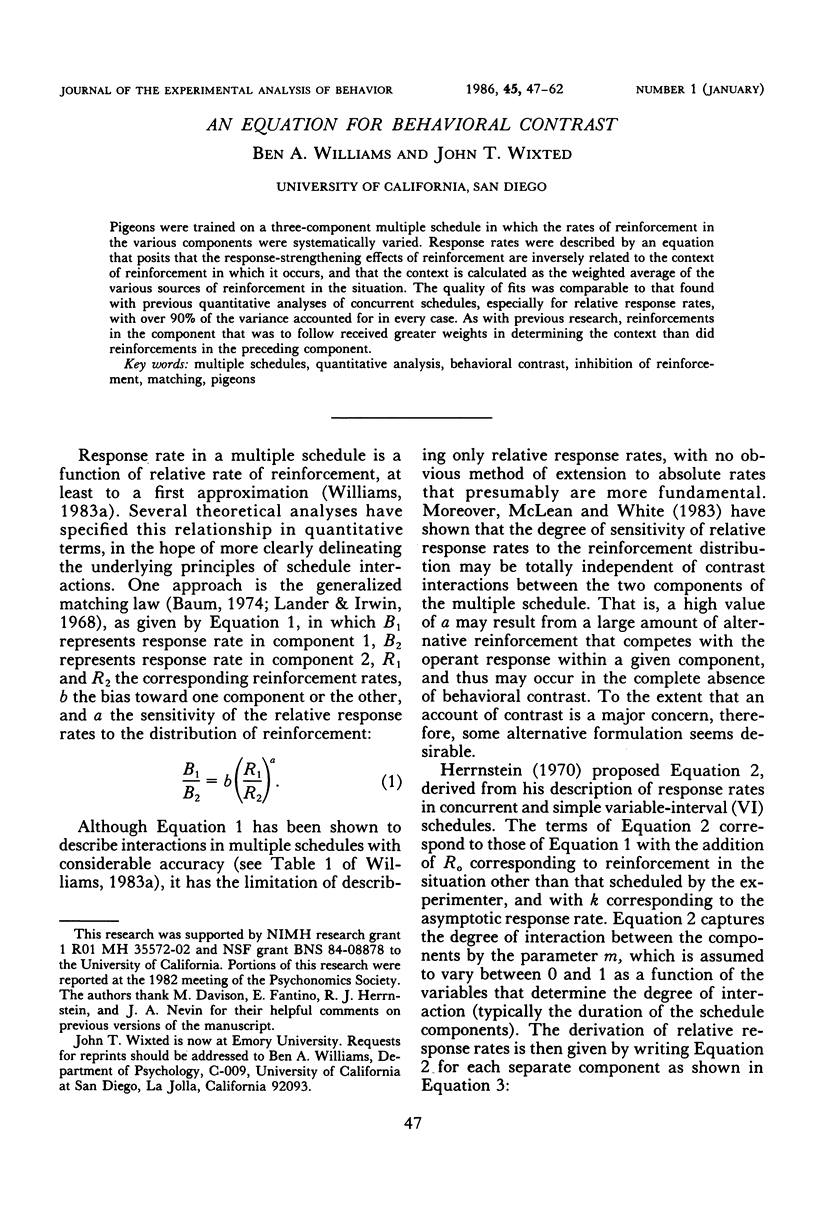
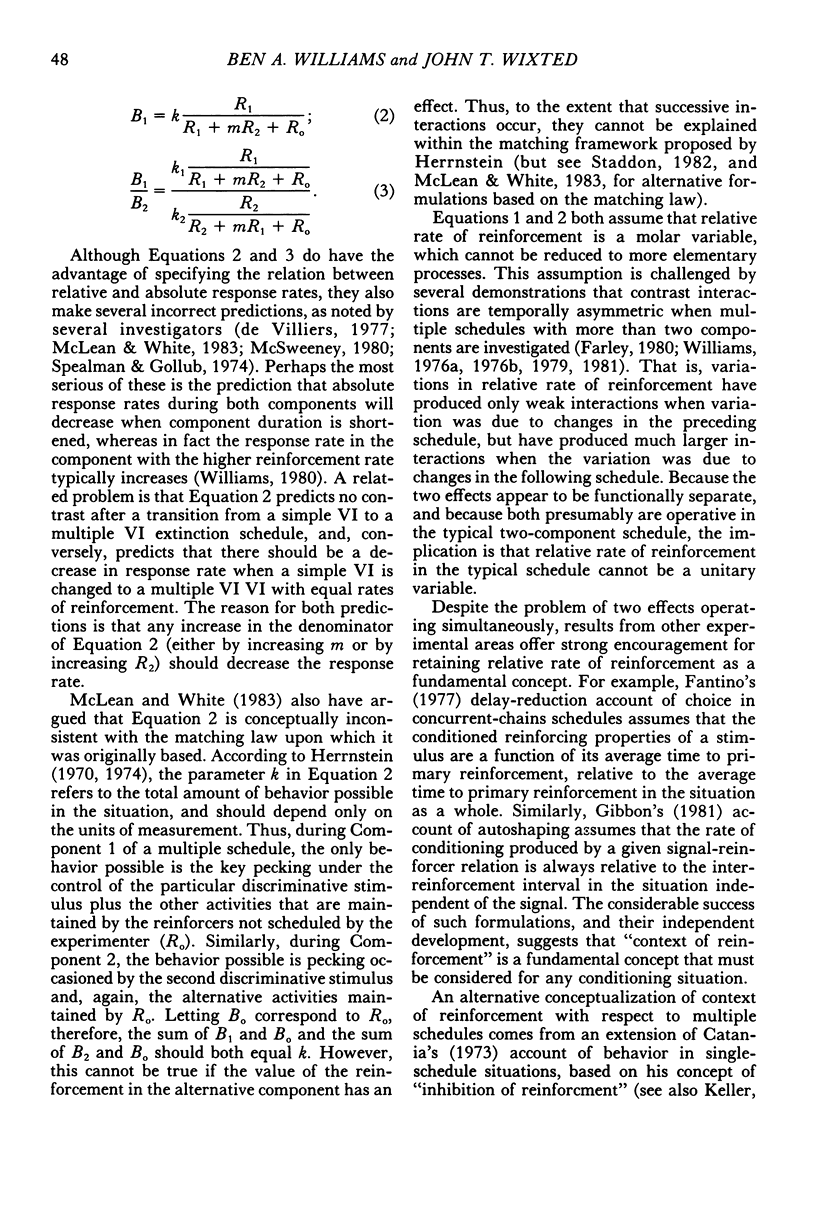
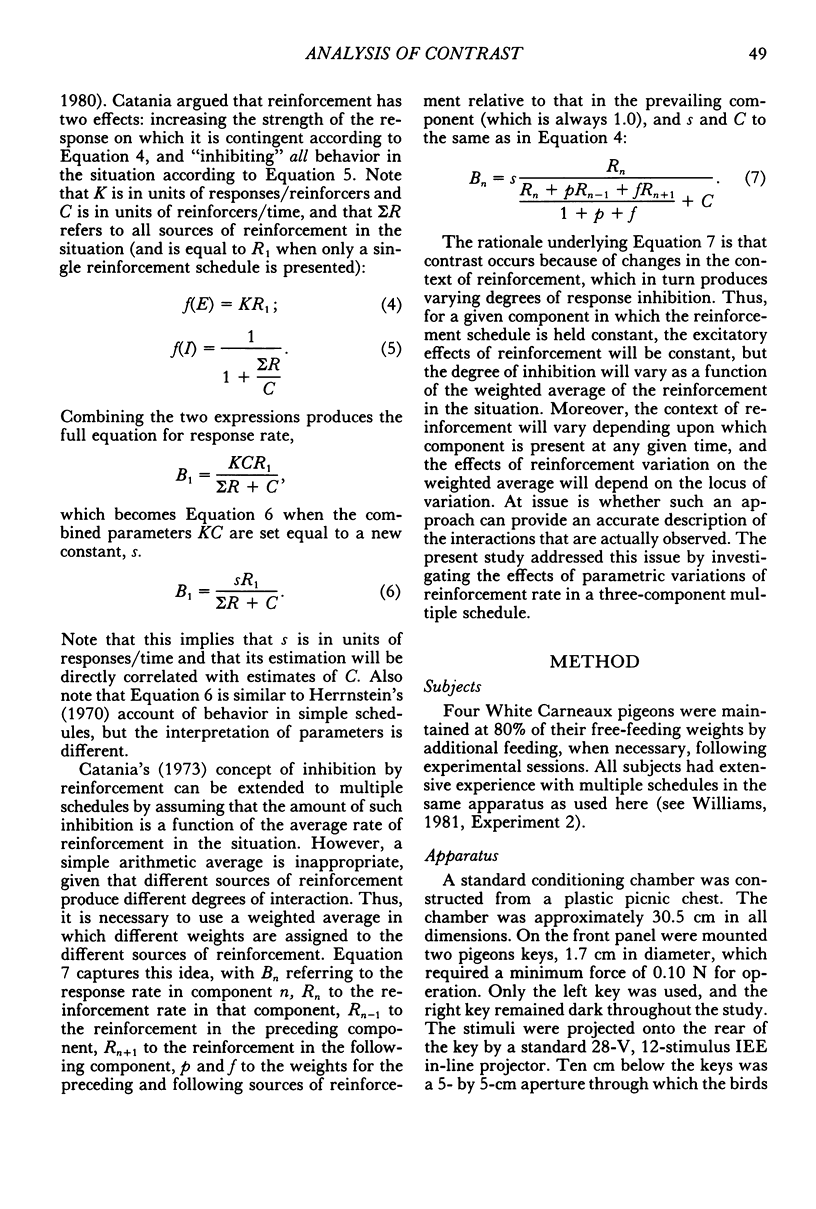
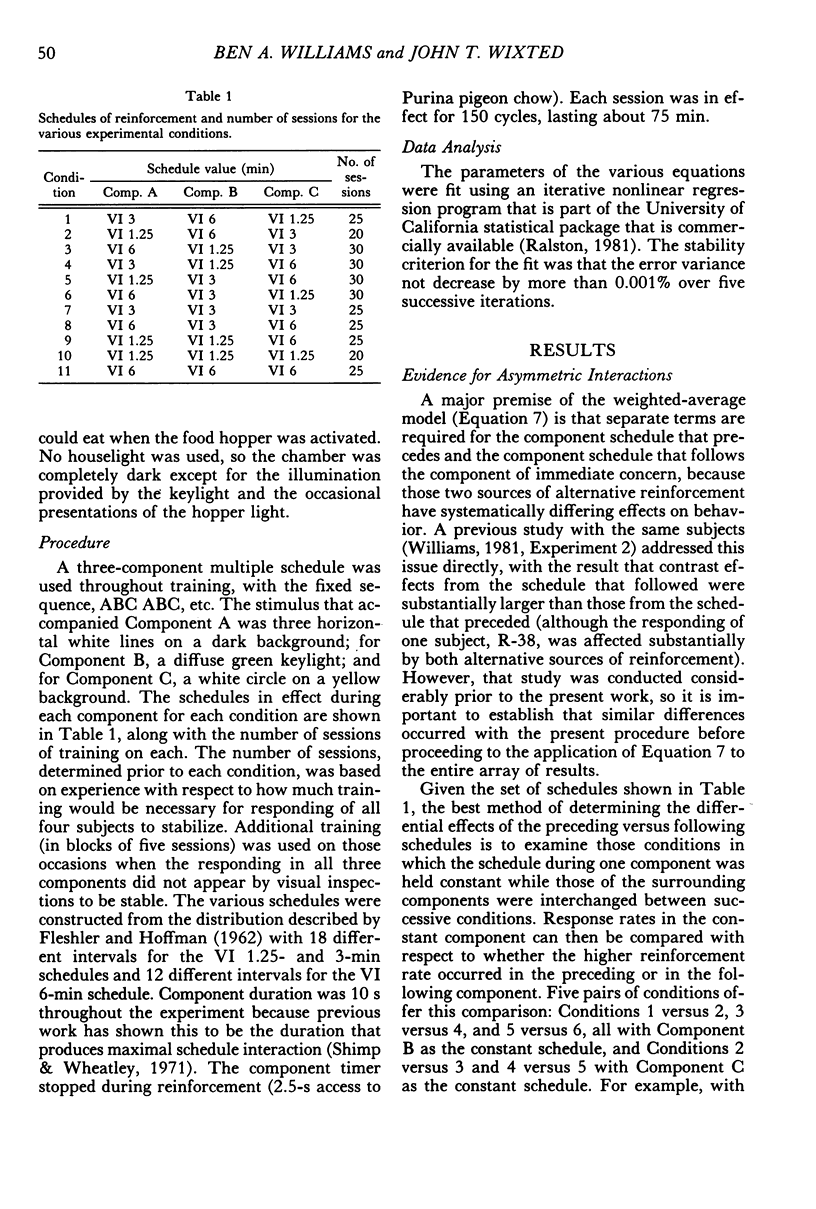
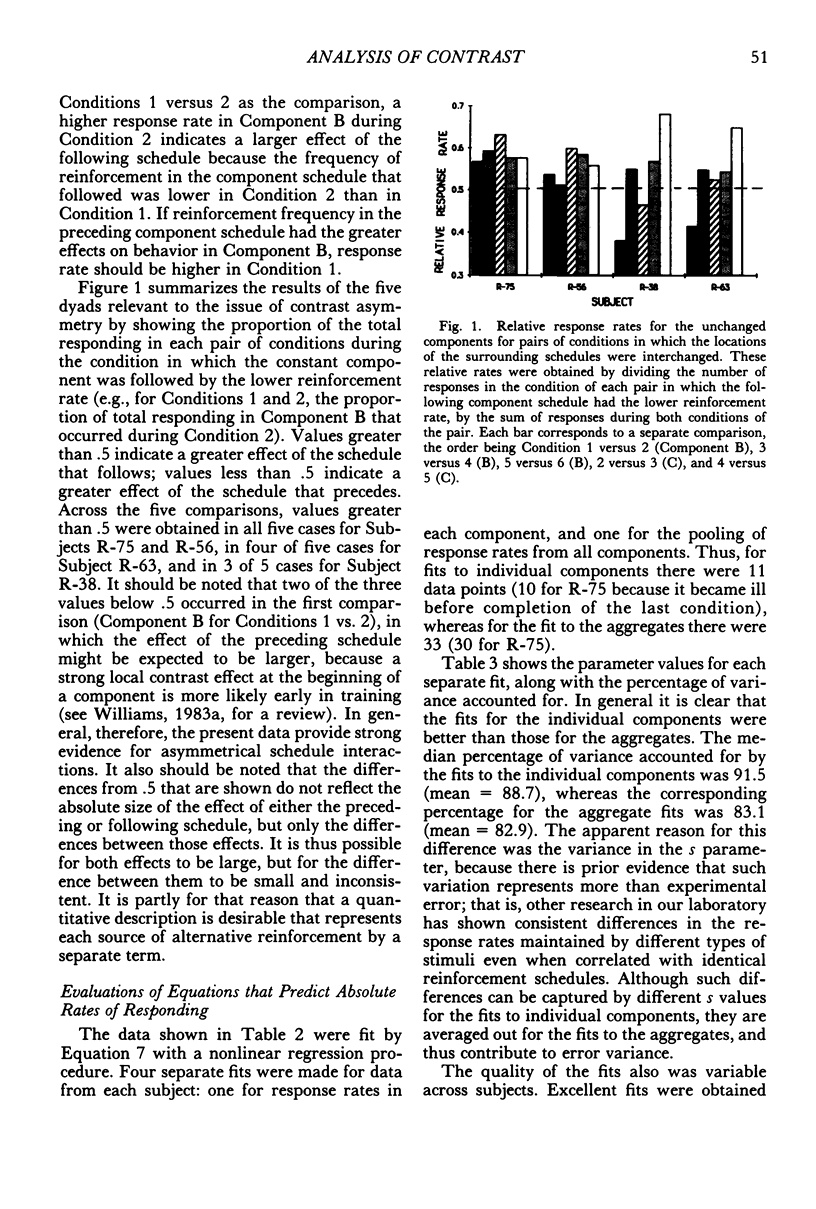
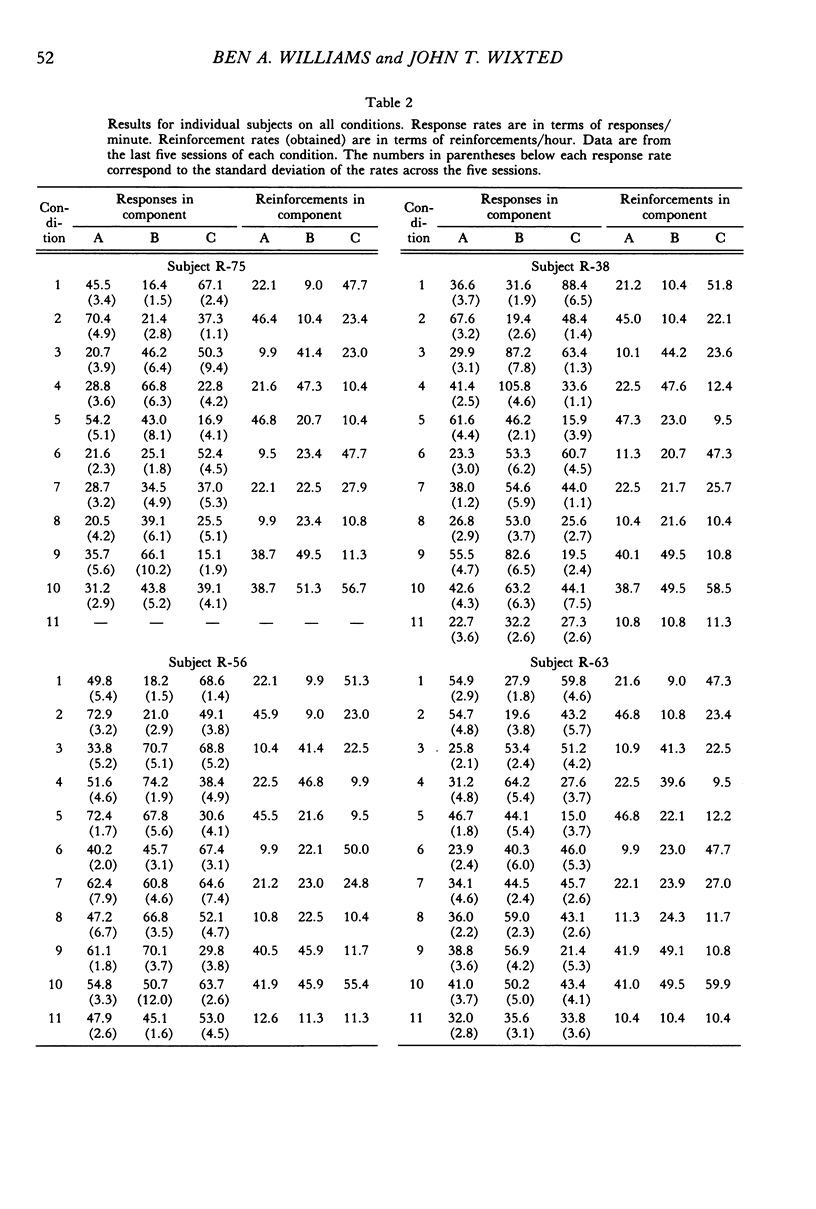
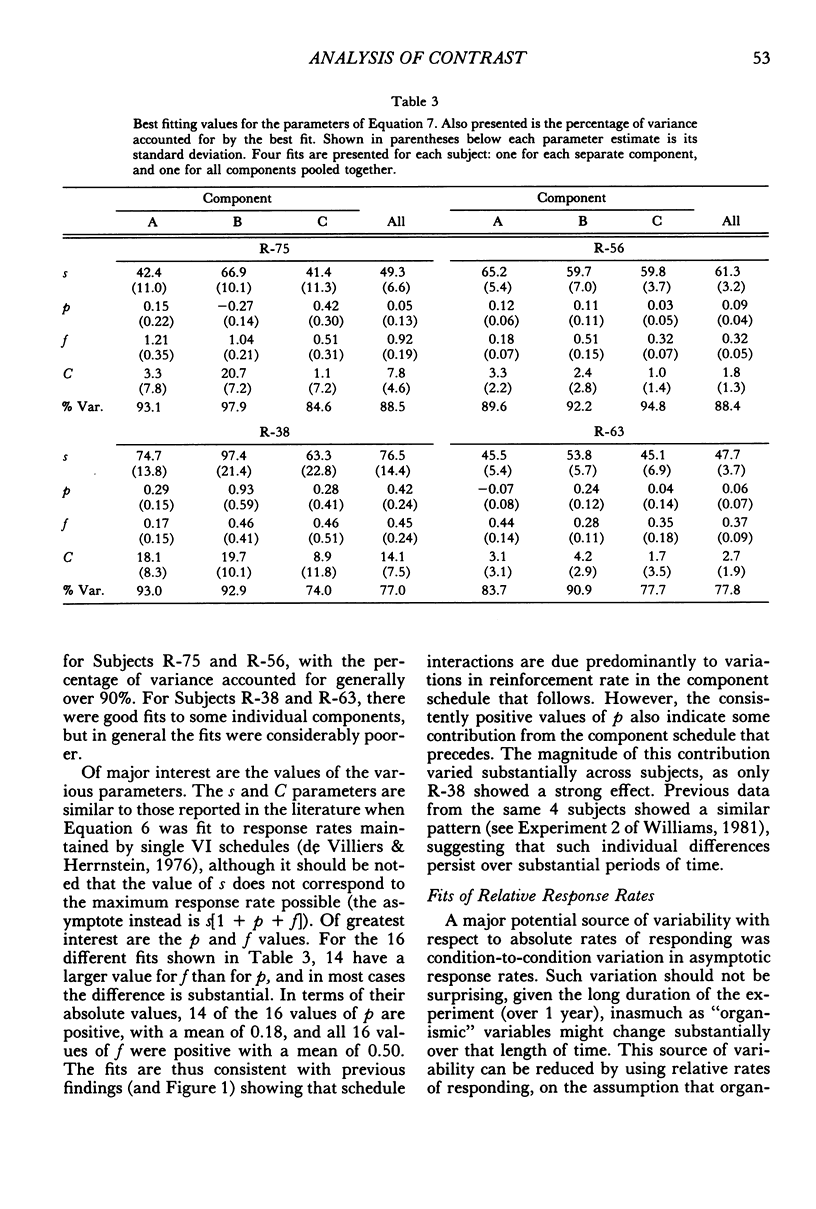
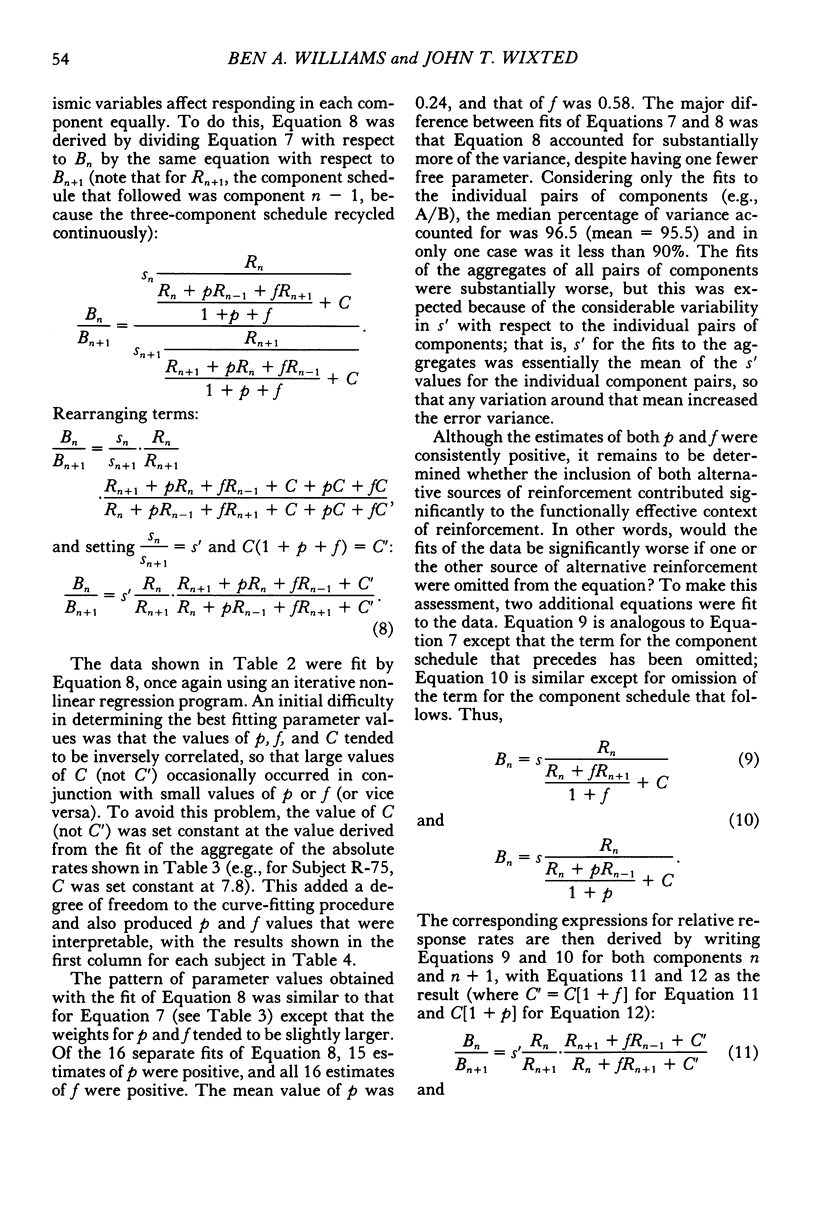
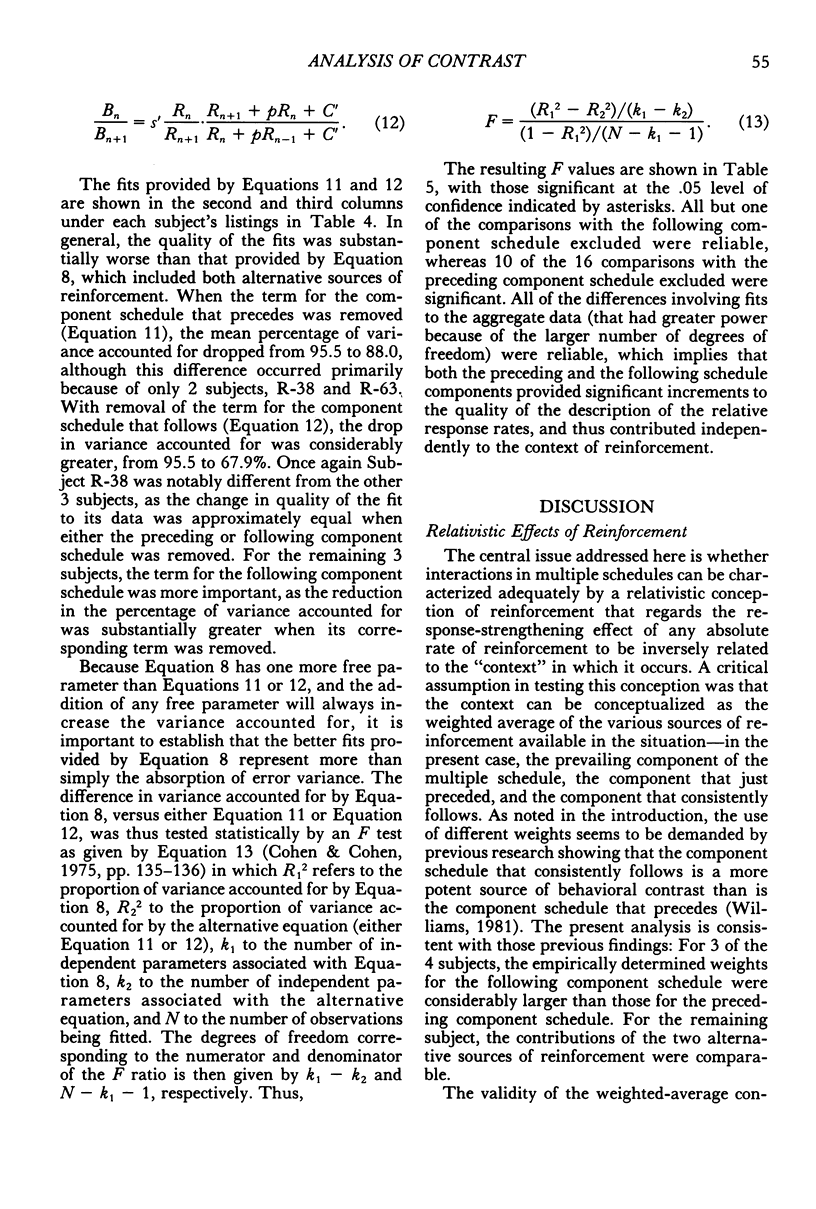

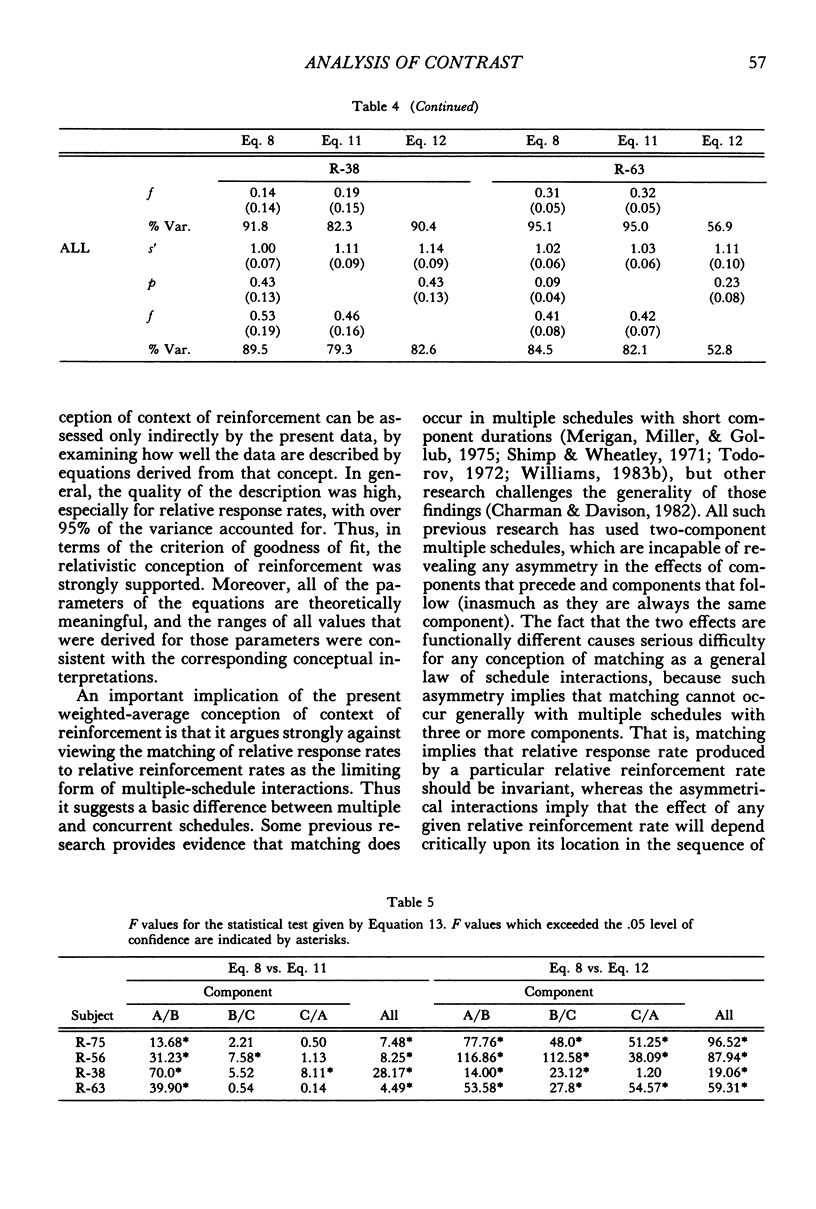

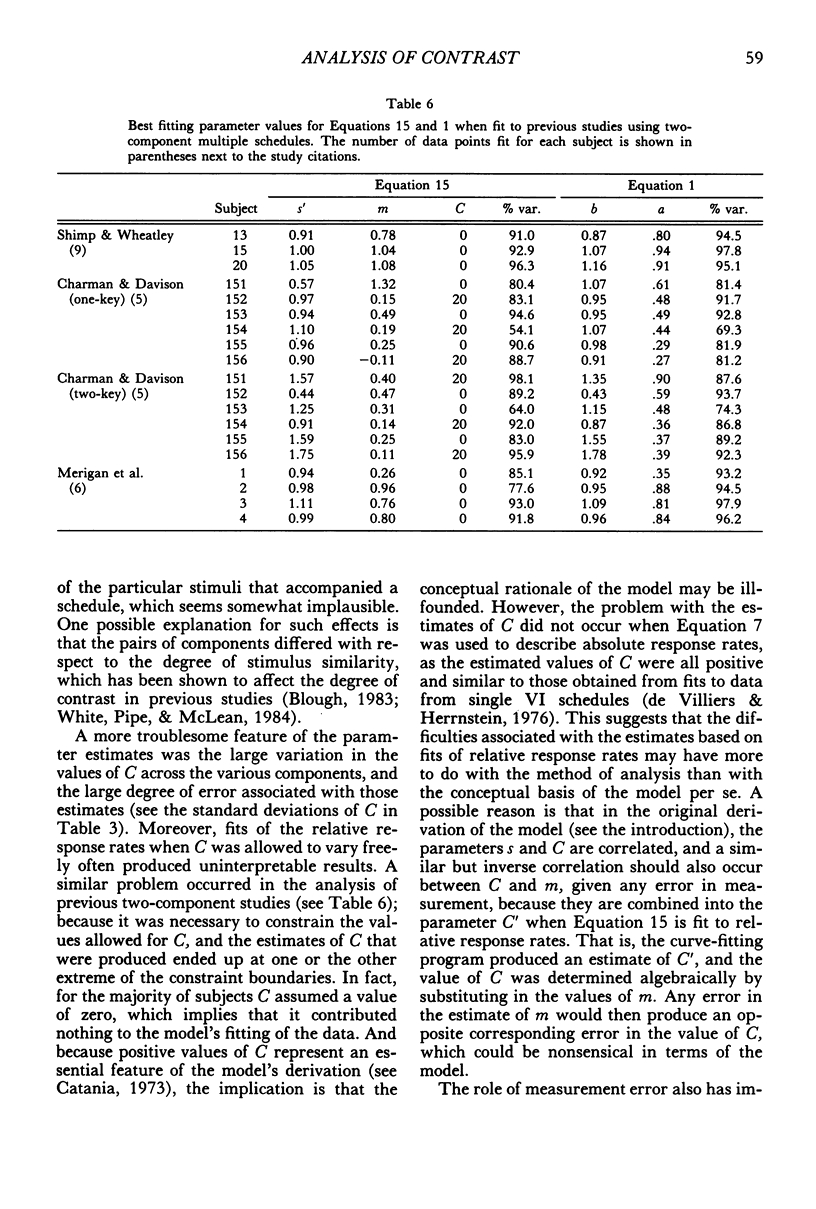
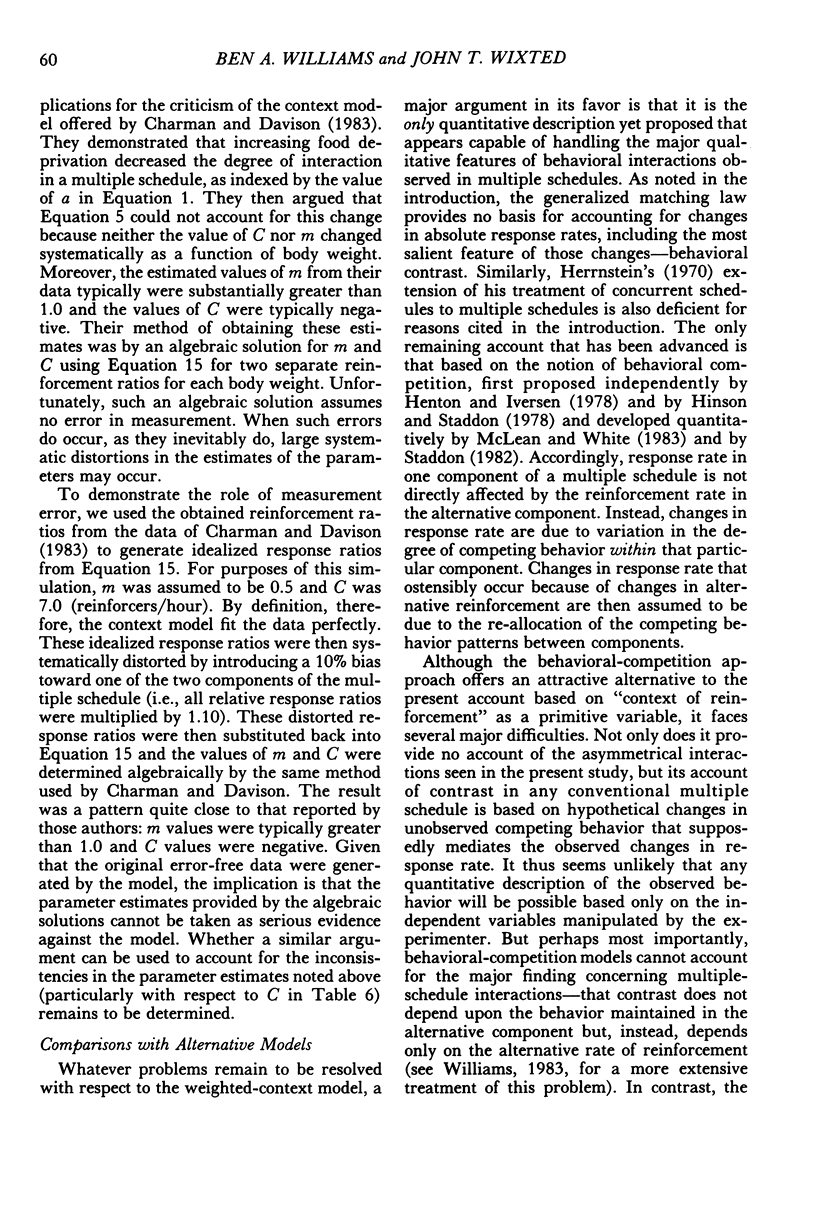
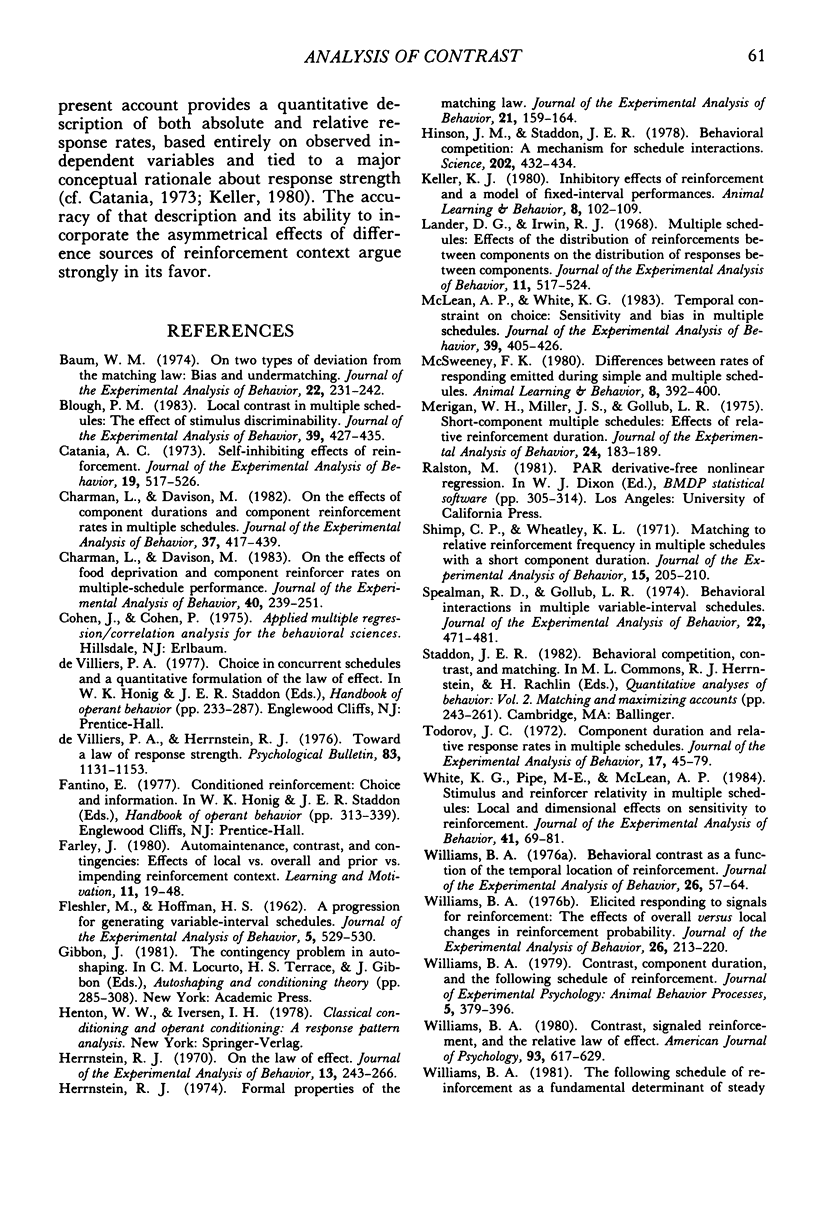
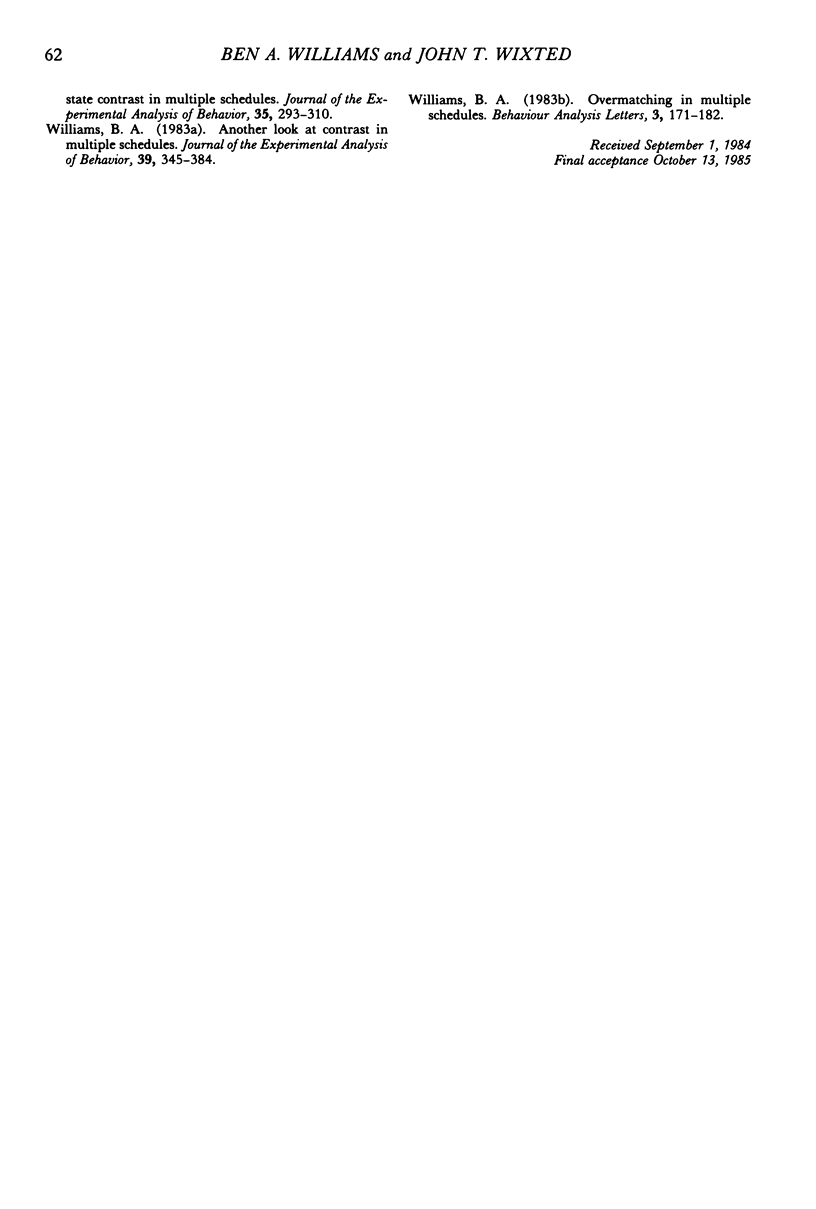
Selected References
These references are in PubMed. This may not be the complete list of references from this article.
- Baum W. M. On two types of deviation from the matching law: bias and undermatching. J Exp Anal Behav. 1974 Jul;22(1):231–242. doi: 10.1901/jeab.1974.22-231. [DOI] [PMC free article] [PubMed] [Google Scholar]
- Blough P. M. Local contrast in multiple schedules: the effect of stimulus discriminability. J Exp Anal Behav. 1983 May;39(3):427–435. doi: 10.1901/jeab.1983.39-427. [DOI] [PMC free article] [PubMed] [Google Scholar]
- Catania A. C. Self-inhibiting effects of reinforcement. J Exp Anal Behav. 1973 May;19(3):517–526. doi: 10.1901/jeab.1973.19-517. [DOI] [PMC free article] [PubMed] [Google Scholar]
- Charman L., Davison M. On the effects of component durations and component reinforcement rates in multiple schedules. J Exp Anal Behav. 1982 May;37(3):417–439. doi: 10.1901/jeab.1982.37-417. [DOI] [PMC free article] [PubMed] [Google Scholar]
- Charman L., Davison M. On the effects of food deprivation and component reinforcer rates on multiple-schedule performance. J Exp Anal Behav. 1983 Nov;40(3):239–251. doi: 10.1901/jeab.1983.40-239. [DOI] [PMC free article] [PubMed] [Google Scholar]
- FLESHLER M., HOFFMAN H. S. A progression for generating variable-interval schedules. J Exp Anal Behav. 1962 Oct;5:529–530. doi: 10.1901/jeab.1962.5-529. [DOI] [PMC free article] [PubMed] [Google Scholar]
- Herrnstein R. J. Formal properties of the matching law. J Exp Anal Behav. 1974 Jan;21(1):159–164. doi: 10.1901/jeab.1974.21-159. [DOI] [PMC free article] [PubMed] [Google Scholar]
- Herrnstein R. J. On the law of effect. J Exp Anal Behav. 1970 Mar;13(2):243–266. doi: 10.1901/jeab.1970.13-243. [DOI] [PMC free article] [PubMed] [Google Scholar]
- Hinson J. M., Staddon J. E. Behavioral competition: a mechanism for schedule interactions. Science. 1978 Oct 27;202(4366):432–434. doi: 10.1126/science.705334. [DOI] [PubMed] [Google Scholar]
- Lander D. G., Irwin R. J. Multiple schedules: effects of the distribution of reinforcements between component on the distribution of responses between conponents. J Exp Anal Behav. 1968 Sep;11(5):517–524. doi: 10.1901/jeab.1968.11-517. [DOI] [PMC free article] [PubMed] [Google Scholar]
- McLean A. P., White K. G. Temporal constraint on choice: Sensitivity and bias in multiple schedules. J Exp Anal Behav. 1983 May;39(3):405–426. doi: 10.1901/jeab.1983.39-405. [DOI] [PMC free article] [PubMed] [Google Scholar]
- Merigan W. H., Miller J. S., Gollub L. R. Short-component multiple schedules: effects of relative reinforcement duration. J Exp Anal Behav. 1975 Sep;24(2):183–189. doi: 10.1901/jeab.1975.24-183. [DOI] [PMC free article] [PubMed] [Google Scholar]
- Shimp C. P., Wheatley K. L. Matching to relative reinforcement frequency in multiple schedules with a short component duration. J Exp Anal Behav. 1971 Mar;15(2):205–210. doi: 10.1901/jeab.1971.15-205. [DOI] [PMC free article] [PubMed] [Google Scholar]
- Spealman R. D., Gollub L. R. Behavioral interactions in multiple variable-interval schedules. J Exp Anal Behav. 1974 Nov;22(3):471–481. doi: 10.1901/jeab.1974.22-471. [DOI] [PMC free article] [PubMed] [Google Scholar]
- Todorov J. C. Component duration and relative response rates in multiple schedules. J Exp Anal Behav. 1972 Jan;17(1):45–49. doi: 10.1901/jeab.1972.17-45. [DOI] [PMC free article] [PubMed] [Google Scholar]
- White K. G., Pipe M. E., McLean A. P. Stimulus and reinforcer relativity in multiple schedules: Local and dimensional effects on sensitivity to reinforcement. J Exp Anal Behav. 1984 Jan;41(1):69–81. doi: 10.1901/jeab.1984.41-69. [DOI] [PMC free article] [PubMed] [Google Scholar]
- Williams B. A. Another look at contrast in multiple schedules. J Exp Anal Behav. 1983 Mar;39(2):345–384. doi: 10.1901/jeab.1983.39-345. [DOI] [PMC free article] [PubMed] [Google Scholar]
- Williams B. A. Behavioral contrast as a function of the temporal location of reinforcement. J Exp Anal Behav. 1976 Jul;26(1):57–64. doi: 10.1901/jeab.1976.26-57. [DOI] [PMC free article] [PubMed] [Google Scholar]
- Williams B. A. Contrast, component duration, and the following schedule of reinforcement. J Exp Psychol Anim Behav Process. 1979 Oct;5(4):379–396. doi: 10.1037//0097-7403.5.4.379. [DOI] [PubMed] [Google Scholar]
- Williams B. A. Elicited responding to signals for reinforcement: the effects of overall versus local changes in reinforcement probability. J Exp Anal Behav. 1976 Sep;26(2):213–220. doi: 10.1901/jeab.1976.26-213. [DOI] [PMC free article] [PubMed] [Google Scholar]
- Williams B. A. The following schedule of reinforcement as a fundamental determinant of steady state contrast in multiple schedules. J Exp Anal Behav. 1981 May;35(3):293–310. doi: 10.1901/jeab.1981.35-293. [DOI] [PMC free article] [PubMed] [Google Scholar]


